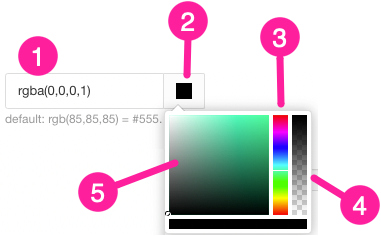Bridgehead Styling (PDF)
In most cases, we recommend that you create subsections by using the section element or by inserting another topic as a component. But it is also possible to use the bridgehead element for a subsection. If your content contains bridgehead elements, use the PDF Layout to style them.
Note
The Bridgehead category also has General settings that apply to all titles. But your choices for the bridgeheads take priority over the General settings.
To style the bridgeheads:
Select Layout in the top menu.

Paligo displays a list of Layouts. The list is empty if there are no custom Layouts in your Paligo instance.
Select the PDF Layout you are going to use for publishing. Alternatively, create a new one (see Create a Layout).
Select Section titles.
Select Bridgehead.
Use Bridgehead ignores nesting level to control which styles apply to
bridegheadelements.Choose:
Enabled to use the styles that are set here, in the Bridgehead sub-category of Section titles.
Disabled to style the
bridgeheads as if they weresections. Paligo will apply the styling from Level 1 - Level 6, depending on the position of eachbridgeheadin the document structure. For example, if a top-level topic contains a paragraph and then abridgeheadfollowed by another paragraph, thebridgeheadis styled as a Level 2 heading (the topic title will be a Level 1 heading).To learn about the level heading styles, see Style Titles (Levels 1-6).
Default to inherit the value for this setting from the base Layout. The base Layout is either a built-in Layout provided by Paligo or another custom Layout, see Layout Relationships - Base, New, Duplicate.
Note
If a
bridgeheadelement has therenderasattribute with a value of a section, it will be styled as a heading at that level. Therenderasattribute takes priority over the Layout settings. For example, abridgeheadwithrenderasset to section 2 will be styled as a Level 2 heading, irrespective of the Bridgehead settings on your PDF Layout.Note
If you chose Disabled, you can ignore the remaining steps in this procedure.
Use the Set the font size for bridgehead setting to control the size of the lettering.
Use Font weight for bridgehead to set the thickness of the characters.
Use Font style for bridgehead to add or remove emphasis styling from the text. Choose Normal for regular text, Italic for forward leaning text, or Backslant for backwards-leaning text.
Note
Using Backslant can produce poor results, as many fonts do not support it as a separate outline.
Set the Font variant for bridgehead to normal for regular sized, mixed case letters or small-caps for smaller, upper-case letters.
Use Set the color for bridgehead to apply a custom color to the text in the bridgehead title.
Clear the Use default color checkbox to select a color of your own choice.
Set the color either by:
Entering an RGBA code for the color you want (1).
Selecting the Color square to display the color selector (2).
Choose the color with the spectrum bar (3).
Control the transparency with the opacity bar (4).
Choose the color shade with the main color panel (5).

Set the Line height for bridgehead. The line height is the amount of space between lines of text in the title.
Enter either:
An absolute value with the units of measurement, for example, 14pt
A relative value, such as 0.8em or 80%
normal for 120% (multiplies font size by 1.2).
Leave the field blank to inherit this value from the base Layout (see Layout Relationships - Base, New, Duplicate).
Use Font-family for Bridgehead to choose the typeface for the text.
Set the Capitalization for bridgehead. This controls whether characters are shown in upper case, lower case, or a combination of the two.
Set the Letter spacing for bridgehead. This is the amount of horizontal spacing between each letter.
To increase the amount of spacing, enter:
A relative amount and units of measurement, for example, 0.2rem.
An absolute amount and units of measurement, for example, 1px.
To decrease the amount of spacing, enter a negative relative or absolute amount, for example, -1px.
Use the space settings to control the amount of space above and below the
bridgeheadelements.The Space-before.optimum is for the space above and the Space-after.optimum is for the space below. Enter a value and its units of measurement, for example, 1.2em or 6pt.
Note
These are different to margin settings, as they define a maximum amount of space. For example, if you have an element with a space-after.optimum of 4pt and the next element has a space-before.optimum of 4pt, the space is 4pt. It works as a maximum amount of space, not a sum total.
Also, Space-before.optimum and Space-after.optimum are normally ignored at the boundary of pages and columns.
Select Save.
When you publish with this Layout, Paligo will apply your chosen styling to any bridgehead elements.